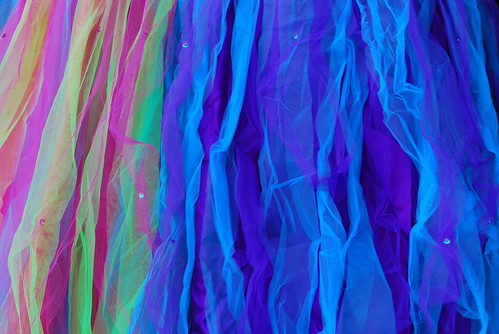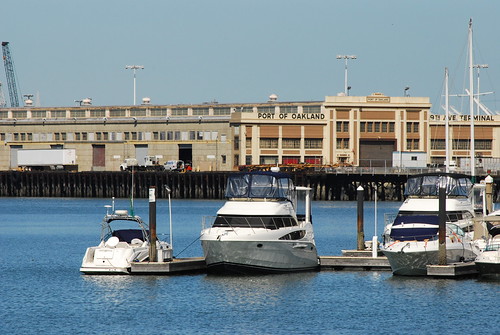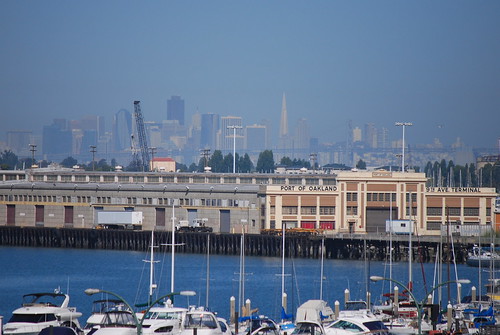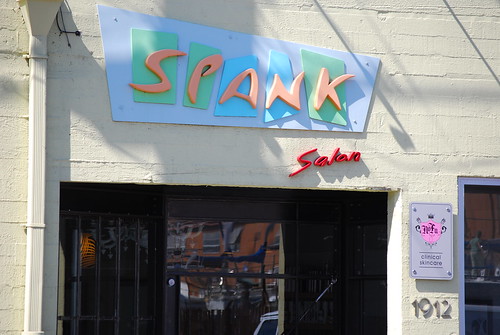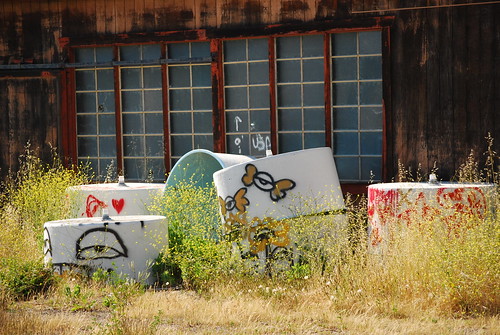It’s been a while since I waxed rhapsodic about riding a bike, and now that summer is upon us, this is probably as good a time as ever to sing the praises of the two-wheeled commute. We cycling evangelists are sometimes considered strident and holier-than-thou about our choice of transportation. I suppose that’s unavoidable, since it’s self-evident that we are morally and ethically superior to our fellow human beings in every way. Whatever the merits of our self-righteousness, however, lecturing and scolding can be counterproductive when one is trying to spread the good word to benighted souls, and our emphasis on the environmental, financial and geopolitical benefits of burning up less petroleum can give the impression that riding a bike is a difficult sacrifice, a hardship that must be endured for altruistic reasons.
In fact, nothing could be further from the truth, so I want to dwell a bit on another benefit of getting around by bicycle which is sometimes given short shrift: the psychological benefit. I’ve thought about this in the past, but it was clarified for me during last month’s Bike to Work day. I usually don’t observe Bike to Work Day in any special way, since I bike to work every day anyway, but for some reason I got into the spirit of it this year, so I woke up early to join a loose peleton (which included my city council rep) from the Grand Lake Theater to City Hall, where they were serving a free pancake breakfast to bike commuters in the plaza out front. I then picked up a free Arizmendi scone at an “energizer station” next to Lake Merritt, then a free cup of coffee at Fruitvale BART station, and by the time I got to work I was as happy as a clam.
Now, I’m a real sucker for free food and drink, but it wasn’t only the free stuff that put me in a good mood. It was also noticing that all the other people riding their bikes to work that day, some of them presumably for the first time, had smiles on their faces. How often do you see car drivers smiling as they commute to work? Almost never! Instead you see a lot of stressed-out grimaces and furrowed brows. It occurred to me that people on bikes tend to look pretty happy as they cruise around town, and will often give a friendly wave to each other as they pass. People in cars, on the other hand, generally look tense and anxious in the gnarl and snarl of rush hour traffic. Sure, some of the friendliness among cyclists is probably just the camaraderie that comes with encountering a kindred spirit, but I am convinced that the cheerfulness of many bike commuters can also be attributed to the salutary psychological effects of riding a bike instead of driving by car.
As I thought about it, I realized that I’ve always tended to be in a better mood upon arrival to work after getting there by bike. When I used to drive a car most of the time, I would occasionally ride to work if my car was in the shop, and while I’d be annoyed about have to leave the house earlier, I would arrive feeling refreshed and chipper. Thinking back to when I lived in New York, I remember when I started riding my bike from Brooklyn to Times Square sometimes, instead of taking the subway every day. The trip took the same amount of time, but when I rode the bike, I would be more alert and cheerful when I arrived, whereas I would still be groggy and grumpy on the days when I took the subway. What’s amazing is that even though I was aware of the correlation between biking to work and feeling good once I got there, I still used to drive my car, because it was “more convenient” and would “save time” (as if time can actually be saved, rather than just spent in more or less rewarding ways). What folly! It wasn’t until my car was totaled that I was able to fully recognize that it was more a curse than a convenience.
So I can sympathize with the stressed-out commuters in their cars, because I used to be one of them. My usual route to work now takes me over and alongside Interstate 880, but in the past I used to join the unhappy masses on 880, and the experiences couldn’t be more different. I used to be just another agitated driver strapped down to my seat, tailgating slower drivers out of frustration (to the point where I once rear-ended a Camry that stopped short in front of me), and changing lanes obsessively in hopes of gaining a few seconds’ advantage. I now quite literally rise above all that, and every time I glance down at the people in their cars, I remember how miserable I used to be driving down that same stretch of road.
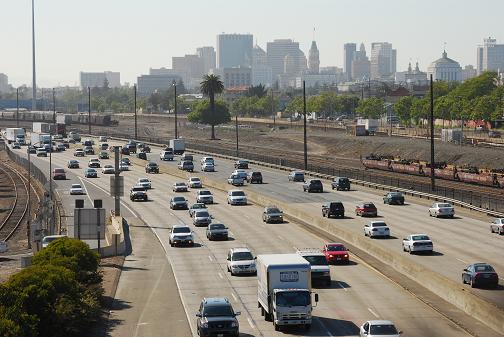
Nowadays I pass over that unsightly ribbon of stress and ride along the waterfront instead, which is why I end up taking so many pictures from that area. Instead of having to stare at bumpers, asphalt and concrete, I get to look at boats, buildings, parks, water and the occasional piece of art. Instead of being subject to the vagaries of traffic, I can ride happily along at whatever pace I choose, enjoying the scenery, breathing in the relatively fresh air coming off the water, and probably feeling the effects of exercise-produced endorphins.
Another reason that riding a bike improves one’s sense of well-being is that one feels far more connected to the places one is passing through. (In this, it resembles evolution’s ideal innovation in human transportation—that is, walking.) Even if one avoids the freeways in a car, the physical separation between a driver and his surroundings means that one often doesn’t care, or even notice, whether the streetscape is pretty or ugly, or whether a neighborhood is alive or dead. The effects of that alienation from the surrounding environment may be hard to measure, but I believe that it has real consequences for one’s state of mind. Even a description of my route to work conjures a comforting sense of place: instead of getting to work via “Interstate 880,” I now get there via Brooklyn Basin, Embarcadero Cove, Union Point, and Jingletown. Have any freeways ever had such evocative names? Not all of my ride to work is beautiful, but none of it is dull.

Even the decaying vestiges of the area’s industrial glory days are fairly picturesque:
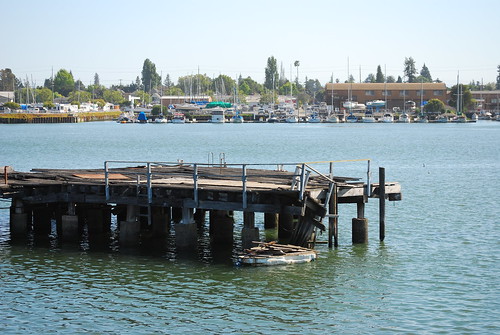
What’s most remarkable to me when I compare riding to work and driving to work is how driving a car can dramatically change one’s relationship with other people. You can take a generally calm and easygoing person—for example, me—and put him behind the wheel of a car, and he is suddenly transformed into a kind of sociopathic monster, who sees other drivers as the enemy, sees pedestrians and bicyclists as irritating obstructions, and is willing to put lives—his own and others’—at risk by running a red light, or swerving around a blind corner, or cutting off someone else on the gamble that you won’t both pull a reckless move at precisely the same moment. And for what? To shave a couple of minutes from one’s commute? Agitation and anxiety are a high price to pay for that small amount of “saved” time.
I don’t know precisely what psychological mechanism is at work, but there really seems to be something about being inside a metal box, separated from the rest of humanity by a barrier of glass and steel, which encourages anti-social behavior. I can still feel the change in mindset occur on the rare occasions when I get behind the wheel of a car, and I need to remind myself to breathe deep and relax—and to stop for those bothersome pedestrians at crosswalks. We like to think that some people are nice and some people are assholes, but the truth is that most people can be both at different times; context, circumstance, and the expectations of others can have a huge impact on one’s behavior. I really think there’s something about getting behind the wheel that can often make normal people act like psychopaths.
Of course some bicyclists also ride recklessly and selfishly, and I can attest from personal experience that being on a bike doesn’t make one immune to road rage. Just as a lot of car drivers are very responsible and considerate, a lot of bike riders are jerks (it’s worth noting, however, that a jerk on a bike is extremely unlikely to maim or kill anyone). And riding a bike does have its drawbacks, such as arriving to one’s destination sweaty, and the danger inherent in sharing roads with heavy metal objects moving at high speeds. (That last issue is why it’s so important to design streets that feel safe to ride a bicycle on—there are a lot of people who would enjoy getting around by bike, but who are reluctant to do it because they simply don’t feel safe riding in traffic.)
When it comes to fostering peace of mind and mental health, I doubt any mode of transportation will ever beat walking, but when getting someplace by two feet is impractical, the two wheels of a bicycle are the next best thing. Exercise, fresh air, independence, and none of the stress that comes with stop and go traffic, or waiting for a late bus, or crowding into a subway car: what’s not to love?
